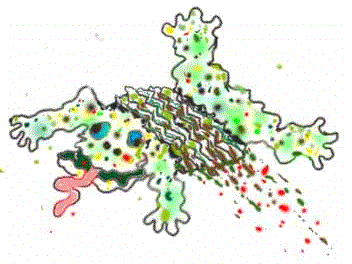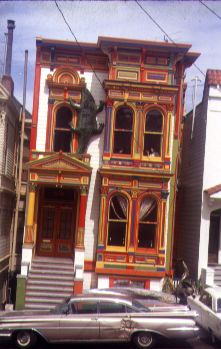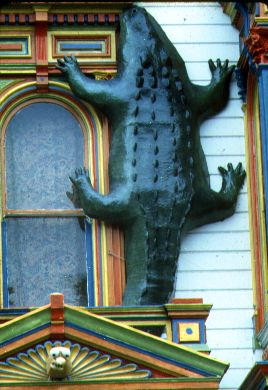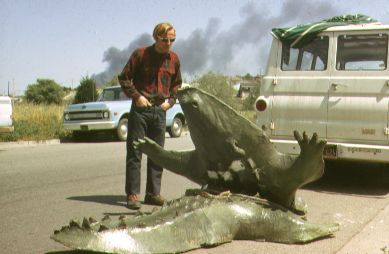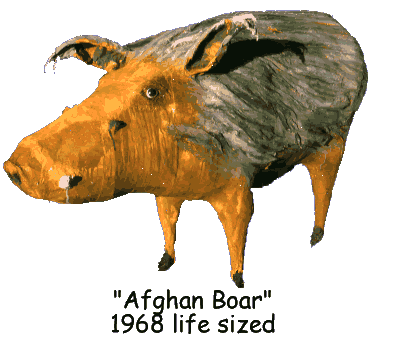Contents
Other Works on Paper
Food & Planets
Plexiglas
Shadow BoxesGallery
Click on any image for a larger view. Then click "back" to return to this page.
Did you come to this site in a frame? Want to get out? Click here!
The Rainbow House
Close-up of the crocodile
Demise of the Nile Crocodile
Papier-Mâché
Three-dimensional Watercolors
David Gilhooly's first job after graduating (1967) from the University of California at Davis was teaching a watercolor class at California
State University at San Jose. He spent the summer before he was to teach making what Gilhooly calls his three-dimensional watercolors.
"I didn't have a kiln at that time, but still wanted to do large animals. They had the advantage of being really light, easy to repair and I found that I could make animals that stood up on their own legs. The pieces were made of chicken wire wrapped in newspaper that had been soaked in wheatpaste. This was then covered with a quilted
packing paper called Kimpak which looked just like fur when dipped in wheatpaste."
The first papier-mâché piece was a Nile crocodile Gilhooly made over a mud crocodile that he made in his backyard. This was hung on the outside of the Rainbow House in San Francisco. The Rainbow House was a house owned by Maija Peeples, a painter, and her then husband
David Zack. The wheat paste on the outside of the piece eventually got moldy because of the foggy nights and the crocodile fell apart. Undaunted, the artist made another more sturdy crocodile. This time
he used an armature of wood and chicken wire covered with the papier-mâché. After watercoloring the piece, several coats of varnish completed it's weather proofing. The piece held up well and was borrowed by some artist friends of Gilhooly's for a show while the artist was in Canada. The crocodile was transported on the roof of a van to and from the show. On the way back, tragedy struck. The wind caught the piece and folded it in half (see gray border for images).
Subsequent papier-mâché pieces were based on a plain chicken
wire armature. The pieces were painted with poster paints in a non-traditional, anti-watercolor technique.
Gilhooly's Fall watercolor students participated in his class by emulating their teacher. Instead of working on the flat surface of paper, they too, made three-dimensional objects out of papier-mâché which were
then anti-watercolored.
This offbeat method of teaching watercolor so outraged the watercolorists on the faculty that they banded together to get Gilhooly fired but could do nothing as he was on probation for two years because he was newly hired. He was finally ousted because he was considered rude during faculty and teacher's union
meetings.
Gilhooly would get another teaching job in Regina, Canada and continue the controversy with his three dimensional watercolors and ceramic sculpture.
Last revised May 11, 1999
